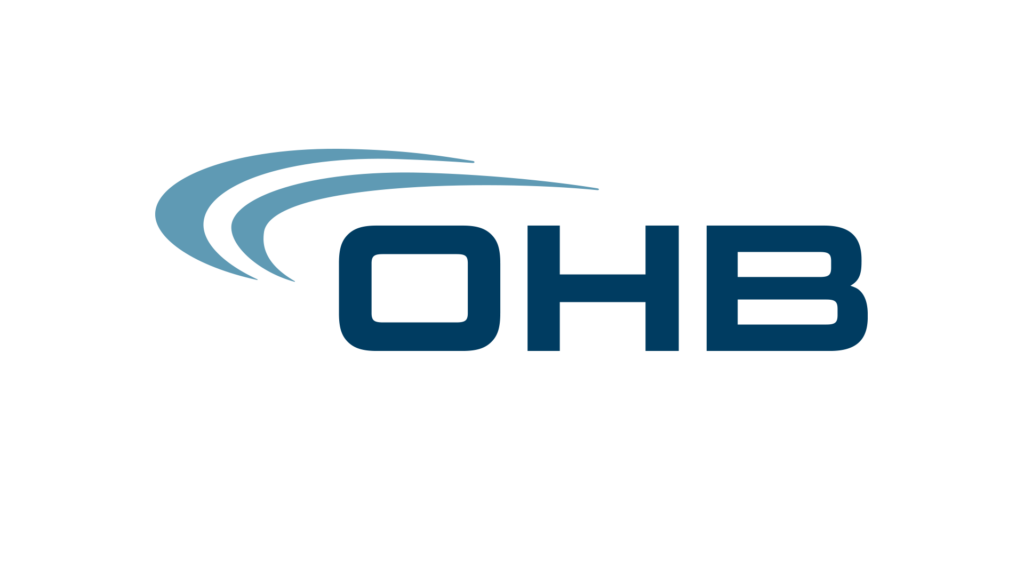Why do some employees thrive, innovate, and stay loyal—while others quietly disengage or leave, even when their paychecks are steady? The answer lies in understanding what is the relationship between employee engagement and job satisfaction. This relationship is more than just a human resources buzzword; it’s the engine behind high-performing, happy teams. For organizations navigating hybrid work and digital transformation, the interplay between engagement and satisfaction has never been more vital—or more misunderstood. Let’s unravel these concepts, trace their evolution, and see how modern solutions like Neroia are revolutionizing the way companies foster genuine connections and lasting fulfillment at work.
Employee Engagement vs. Job Satisfaction: Clear Definitions
To grasp what is the relationship between employee engagement and job satisfaction, it’s essential to define both terms with clarity.
Job satisfaction refers to how content an employee feels with their job. It’s shaped by factors such as salary, benefits, work-life balance, and respect. A satisfied employee may feel comfortable, but that doesn’t necessarily mean they’re invested in the company’s mission or willing to go the extra mile.
Employee engagement, on the other hand, is about emotional commitment. Engaged employees feel connected to their work and the organization’s purpose. They’re motivated to contribute, innovate, and collaborate. Engagement goes beyond satisfaction—it’s about energy, passion, and participation.
The Emotional Dimension
Emotionally, job satisfaction is like a sense of calm or contentment: “I’m happy enough here.” Engagement, in contrast, is excitement and pride: “I care about what I do and want to make a difference.” While satisfaction can exist without engagement, the reverse is rare. Engaged employees almost always feel satisfied, but not all satisfied employees are engaged.
The Behavioral Dimension
Behaviorally, satisfied employees show up and do what’s required. Engaged employees show up early, suggest improvements, help colleagues, and advocate for the company. Engagement is visible in proactive behaviors—participating in projects, volunteering for micro-events, or sharing ideas in meetings. Satisfaction is often passive; engagement is active.
Historical Context: How We Started Measuring Workplace Happiness
Understanding what is the relationship between employee engagement and job satisfaction means looking at how organizations have measured and valued workplace happiness over time.
From Herzberg to Gallup Polls
In the 1950s, Frederick Herzberg’s Motivation-Hygiene Theory distinguished between “hygiene” factors (like pay and working conditions) that prevent dissatisfaction and “motivators” (like recognition and growth) that drive engagement. This theory laid the groundwork for separating job satisfaction from engagement.
Decades later, Gallup’s global surveys revealed that just measuring satisfaction wasn’t enough. Their research showed that engaged employees outperformed others in productivity, retention, and customer satisfaction. The focus shifted from “Are you happy?” to “Are you invested and thriving?”
The Evolution of eNPS and Pulse Surveys
Modern tools like the Employee Net Promoter Score (eNPS) and pulse surveys allow organizations to track both satisfaction and engagement in real time. These tools provide quick, actionable insights—are employees likely to recommend the company? Do they feel their work matters?
Yet, traditional surveys can miss the nuances of hybrid work and changing employee needs. That’s where platforms like Neroia, with AI-driven analytics and anonymized feedback, are setting new standards for understanding the complex relationship between engagement and satisfaction.
What Is the Relationship Between Employee Engagement and Job Satisfaction?
So, what is the relationship between employee engagement and job satisfaction? Are they cause and effect, or two sides of the same coin?
Cause and Effect, or Two Sides of One Coin?
Research shows that job satisfaction and employee engagement are closely linked but not identical. Satisfaction is often the foundation—employees need fair pay, respect, and security to feel satisfied. But engagement requires more: a sense of purpose, growth, and connection.
“An employee can be satisfied with a job without being engaged in the job. Employee engagement is much more than being content with pay and the ability to leave at 3 pm. That contentedness is merely job satisfaction, and though satisfaction is generally enough to retain employees, it’s not enough to ensure productivity.”
— DecisionWise
In other words, satisfaction keeps people from leaving, but engagement makes them want to stay and excel.
The Engagement–Satisfaction Feedback Loop
The relationship is cyclical. Engagement boosts satisfaction: when employees feel recognized, included, and empowered, their satisfaction grows. Conversely, high satisfaction (from fair treatment and supportive environments) makes it easier for engagement to flourish. In hybrid or remote settings, this loop can break if employees feel isolated or overlooked—demonstrating why both elements must be nurtured together.
Why the Relationship Matters: Impact on Performance, Retention and Profits
Understanding what is the relationship between employee engagement and job satisfaction isn’t just academic—it’s a business imperative.
Productivity and Quality
Engaged and satisfied employees are more productive, creative, and committed to quality. Gallup’s research found that highly engaged business units see a 14% boost in productivity and a 23% increase in profitability compared to less engaged peers. When engagement and satisfaction reinforce each other, teams deliver better results.
Turnover and Recruitment Costs
Satisfied but disengaged employees may stay, but they’re less likely to innovate or advocate for the company. Disengaged employees are more prone to absenteeism and turnover, driving up recruitment and training costs. Engaged employees, who are also satisfied, are loyal and less likely to leave, reducing these expenses.
Customer Satisfaction Ripple Effect
The relationship between engagement and satisfaction doesn’t just affect employees—it impacts customers. Engaged, satisfied employees provide better service, solve problems faster, and foster customer loyalty. This ripple effect strengthens brand reputation and drives organic growth.
Diagnosing Your Organisation: Key Metrics and Tools
To improve what is the relationship between employee engagement and job satisfaction, organizations need to measure both with precision and empathy.
Quantitative Measures (Surveys, Absenteeism, KPIs)
- Pulse surveys: Short, frequent questionnaires to gauge mood and engagement.
- eNPS: Tracks likelihood of employees recommending the workplace.
- Absenteeism rates: High rates can signal low satisfaction or engagement.
- Performance KPIs: Productivity, quality, and innovation metrics reveal engagement levels.
Qualitative Signals (Culture Audits, Stay Interviews)
- Culture audits: Assess if values and practices support both satisfaction and engagement.
- Stay interviews: One-on-one conversations uncover what keeps employees motivated and what might drive them away.
- Feedback channels: Open forums or AI-powered chat tools allow real-time, anonymous input.
“By increasing the likelihood that satisfaction is a result of engagement, you make satisfaction—a measurable element—a key performance indicator.”
— BambooHR
Strategies to Boost Both Engagement and Satisfaction
Traditional, one-size-fits-all initiatives often fall short, especially in hybrid environments where employees crave authentic connection and flexibility. Here’s how organizations can nurture both elements:
Aligning Purpose, Recognition and Growth
- Connect work to purpose: Show how individual roles contribute to broader goals.
- Personalized recognition: Celebrate achievements in ways that matter to each person.
- Growth opportunities: Offer learning, mentorship, and new challenges.
Building a Fair Rewards and Benefits System
- Competitive compensation: Ensure pay and benefits meet or exceed market standards.
- Innovative perks: Move beyond generic perks—offer wellness programs, flexible schedules, or unique benefits like those enabled by Neroia, where employees effortlessly discover micro-events tailored to their interests.
Crafting an Inclusive, Communicative Culture
- Open communication: Foster transparency and regular feedback.
- Inclusive practices: Encourage participation across roles and locations.
- AI-powered connections: Use technology to break silos and facilitate organic, small-group interactions.
Table: Comparing Job Satisfaction and Employee Engagement
Bullet List: Traditional Pitfalls in Hybrid Engagement
- Impersonal, mass-organized activities that fail to resonate with individual interests
- Over-reliance on digital perks (gift cards, online games) without fostering true connection
- Limited opportunities for informal, organic interaction in remote settings
Avoiding Common Mistakes When Tackling Engagement and Satisfaction
Even with good intentions, companies can stumble in their approach to what is the relationship between employee engagement and job satisfaction.
Over-reliance on Perks
While perks like free snacks or virtual happy hours can boost short-term morale, they rarely deepen engagement or satisfaction if not tied to meaningful experiences. Employees quickly see through surface-level gestures that don’t address real needs.
Ignoring Manager Capability
Managers play a pivotal role in fostering both engagement and satisfaction. When organizations neglect to train or support managers, employees may feel undervalued or misunderstood, leading to disengagement.
Measuring Once a Year
Annual surveys are too slow for today’s fast-paced, hybrid workplaces. Real-time, ongoing feedback is essential to spot issues early and adapt strategies quickly.
“Creating a culture of engagement requires more than completing an annual employee survey and then leaving managers on their own, hoping they will learn something from the survey results that will change the way they manage.”
— Gallup
Ordered List: Steps to Build a Thriving Engagement–Satisfaction Cycle
- Assess baseline satisfaction and engagement using pulse surveys and culture audits.
- Identify gaps—are employees satisfied but not engaged, or vice versa?
- Implement personalized, AI-driven micro-events (e.g., wellness sessions, group runs) to foster organic connections.
- Recognize and reward both individual and team achievements in ways that matter to employees.
- Monitor and adapt using real-time analytics and feedback, ensuring continuous improvement.
Neroia: Revolutionizing the Relationship in the Hybrid Era
Traditional company-organized initiatives often miss the mark in hybrid and remote environments. Large-scale events can feel forced or impersonal, and digital-only perks rarely foster genuine connection. Employees crave experiences that are meaningful, flexible, and tailored to their interests.
Neroia addresses these challenges by leveraging artificial intelligence to orchestrate micro-events—small, informal gatherings like yoga sessions, cycling meetups, or cultural exchanges. These AI-curated activities are matched to employees’ preferences and schedules, breaking down silos and nurturing authentic relationships regardless of location.
For example, in the OHB Group pilot, Neroia’s platform enabled spontaneous yoga classes and company runs, coordinated via AI chat and anonymized analytics. Employees could opt into activities that suited their interests, forming new bonds and boosting both engagement and satisfaction. The platform’s closed, secure community ensures privacy while providing HR teams with valuable, anonymized insights to further refine culture initiatives.
Neroia’s approach aligns perfectly with 2025 workplace trends: personalized recognition, well-being support, and the integration of technology to foster human connections. By making it easy to effortlessly discover and join micro-events, Neroia transforms the employee experience from generic to genuinely engaging.
“Neroia’s AI-driven platform replaces generic efforts with personalized, organic interactions—helping employees feel seen, valued, and connected, wherever they work.”
Bullet List: How Neroia Supports Engagement and Satisfaction
- AI-matched micro-events tailored to individual interests and availability
- Seamless integration with existing HR programs and external resources
- Anonymized data analytics for continuous improvement, while prioritizing employee privacy
- Flexible, employee-centric design that adapts to hybrid and remote work realities
The Future: Cultivating Vibrant, Connected Workplaces
What is the relationship between employee engagement and job satisfaction? It’s a dynamic, mutually reinforcing cycle. When organizations invest in both—through meaningful experiences, authentic recognition, and inclusive culture—they unlock higher well-being, retention, and productivity.
Neroia’s vision is to revolutionize workplace culture by making these connections effortless and organic. By leveraging AI, Neroia helps companies move beyond impersonal programs and truly engage every employee, wherever they are.
In 2025 and beyond, the most successful organizations will be those that understand and nurture this relationship—breaking silos, cultivating vibrant connections, and empowering employees to thrive. For companies ready to lead the way, Neroia offers the smartest, most human-centric solution.
Ready to discover how Neroia can transform your workplace? Effortlessly connect, engage, and satisfy your teams—one authentic experience at a time.




